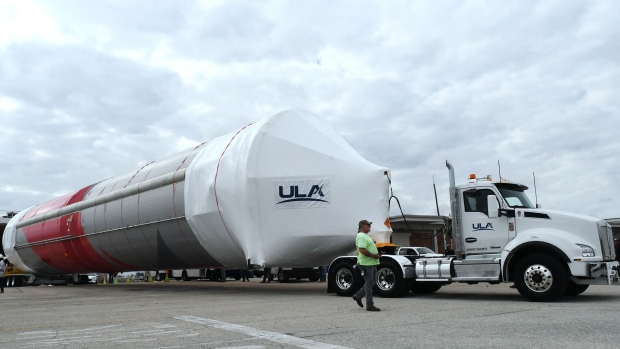Jun 8, 2023
Vulcan Rocket Comes Closer to First Flight After Test Firing
, Bloomberg News

(Bloomberg) -- Rocket-launch provider United Launch Alliance conducted a critical engine test of its new Vulcan vehicle on Wednesday, helping clear the way for the rocket’s debut.
The test, which ULA calls a flight readiness firing, involved igniting the two main engines on Vulcan as the rocket was held down on its launchpad.
It was the first time Vulcan was fired up as a fully assembled rocket. The procedure was meant to serve as a dress rehearsal for launch day, allowing the ULA team to fill the vehicle up with propellant and practice the launch countdown through engine ignition.
“This is as close as you can come to launching a rocket without actually launching the rocket,” Mark Peller, vice president of Vulcan development at ULA, said after the test, adding that it was “our last major milestone on the path to launch.”
ULA will now analyze data from the test to determine if the rocket is ready to launch soon.
A joint venture of Boeing Co. and Lockheed Martin Corp., ULA serves as one of the primary launch providers for the US Department of Defense. The Vulcan rocket was built to be ULA’s next-generation vehicle, and ultimately replace its workhorse Atlas V rocket.
The vehicle is also ULA’s attempt to end its reliance on the Russian RD-180 engine, which is used to propel the Atlas V. The company has been seeking an alternative since Russia’s invasion of Crimea in 2014.
Vulcan’s primary engines are two BE-4s, manufactured by Jeff Bezos’s Blue Origin LLC, which together produced nearly a million pounds of thrust during Wednesday’s engine ignition.
It’s been challenging to get Vulcan to the launchpad. When ULA introduced the vehicle in 2015, it said Vulcan could probably fly within four years. But there have been repeated delays, and it took longer for Blue Origin to manufacture the BE-4 engines than the companies initially expected. The engines were delivered to ULA last year.
Earlier this year, ULA said it was targeting a May 4 launch date for Vulcan. Those plans were upended after an explosion occurred during a test of Vulcan hardware in March. ULA hasn’t given an updated timeline for the rocket’s launch.
The flight readiness test ULA performed Wednesday also occurred later than planned. The company expected to perform the task on May 25, but said it would delay doing so after observing odd behavior in one of the rocket’s systems.
©2023 Bloomberg L.P.


